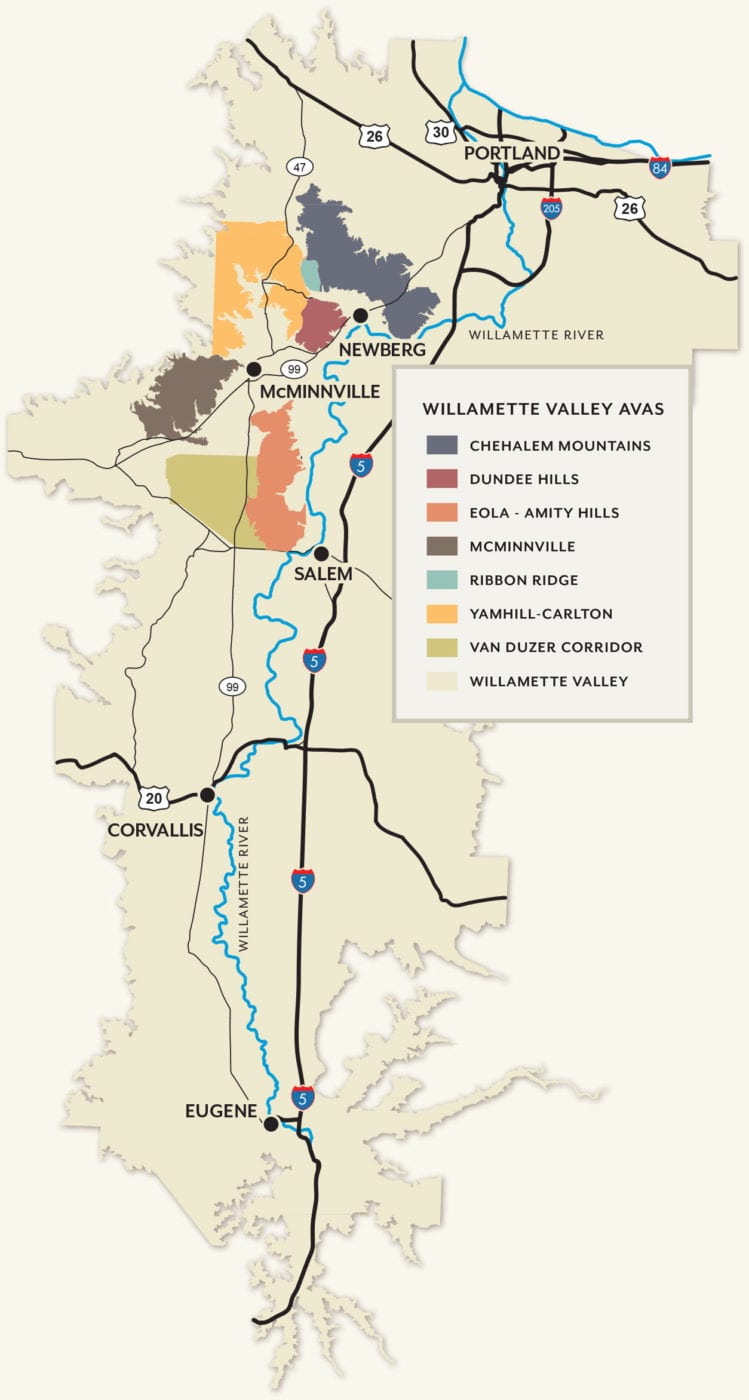Getting to Know The Willamette Valley AVAS
The Willamette Valley in Oregon spans from Portland in the north to Eugene in the south. Within this larger AVA, there are seven AVA's. Perhaps you have heard of Chehalem Mountains, Dundee Hills, Eola-Amity Hills, McMinnville, Yamhill-Carlton, Ribbon Ridge or even the newest Van Duzer Corridor. But, how can you remember each of these AVAs and what is the difference in the Pinot Noir produced in each area. I spent four intensive days in the Willamette Valley on the Wine Writers Educational Tour in August and we delved into each AVA. I wrote about it in the Napa Valley Register which you can read here. But, take a close look at the map of the Willamette Valley AVAs and you will find some unique shapes that make the AVAs all the easier to remember.
When we talk about wine regions, we see the big picture: Napa, Sonoma, Santa Ynez Valley, Willamette Valley, etc.
Each region is then broken up into AVAs (American Viticulture Areas). How each AVA is determined is based on a common set of attributes and microclimates that contribute to the uniqueness of the wines produced. As wine regions have evolved in the United States, new AVAs have been created.
It is not just about buying a wine from Napa, but is it from Howell Mountain AVA, Diamond Mountain AVA, Spring Mountain AVA or another AVA? What about Sonoma? What about the Santa Ynez Valley?
And what about the Willamette Valley? Do you know what the AVAs are within the Willamette Valley? Can you tell the difference between one AVA and another?
15 October, 2019


